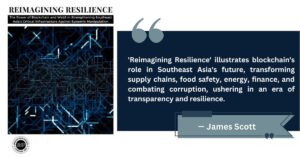Undeniably, the Southeast Asian landscape, abundant with its fertile farms and a culinary palette that sparks joy, faces the Herculean task of food safety. Spanning beyond mere prevention of ailments, food safety emerges as a critical pillar supporting public health, societal welfare, and an implicit faith that binds cultivators and consumers. Maintaining this symbiotic relationship requires a seamless and secure food supply chain. However, a panoply of complex obstacles – deficiencies in traditional record management, limited visibility across the supply chain, and susceptibility to deceptive practices – often impair this crucial goal. One wonders, then, about potential strategies to circumvent these formidable hurdles.
Enter the technological prodigies of blockchain and Web3 technologies. With their trailblazing potential, they stand on the precipice of revolutionizing food safety management. These breakthroughs aim to usher in a new era of transparency, traceability, and trust, fortifying Southeast Asia’s food industry against looming threats and systemic risks.
Revolutionizing Food Safety in Southeast Asia: Blockchain and Web3 Technologies
Explore how blockchain and Web3 technologies are transforming food safety management in Southeast Asia, offering transparency, traceability, and trust in the supply chain. Learn about the potential benefits, challenges, and implications for stakeholders.
James Scott | NGO & Congressional advisor
The underpinnings of blockchain technology reveal a decentralized ledger system, recording transactions across numerous computers in an unalterable format. This immutability builds an unbroken chain of trust, offering a substantial advantage to food safety protocols. Delving into the depths of blockchain technology illuminates its unique ability to enhance these protocols through traceability and immutability.
Imagine the unfortunate event of a food-borne disease outbreak. Conventional record-keeping methods may falter under such a crisis, hobbled by inefficiencies and a lack of real-time traceability. Pinpointing the outbreak source becomes an insurmountable challenge, causing response delays that may escalate the situation. Introducing blockchain technology dramatically transforms this narrative, ensuring real-time traceability and swift responses. Blockchain technology’s precision allows the contamination source to be traced to a specific batch or even a singular farm, thereby facilitating quick containment measures and potentially saving countless lives.
However, the advantages of blockchain stretch beyond mere crisis management—it promises end-to-end traceability from cultivation to consumption. Each step in the product journey is meticulously documented and authenticated on the blockchain, ensuring unprecedented transparency. Let’s illuminate this idea with a concrete example: a batch of mangoes harvested from a Thai farm. Each detail—harvesting date, location, and mango quality—can be diligently recorded on the blockchain. As the mangoes journey from the farm to processing units, to distributors, and finally land on a retail store shelf, each transition is accurately chronicled on the blockchain.
Get Free Full eBook About Reimagining Resilience: The Power of Blockchain and Web3
Consumers, equipped with a QR code on the product, can access the entire product history, transforming their purchasing decision from a mere transaction to an informed choice. Moreover, blockchain ensures equitable trade practices for farmers and allows retailers to enhance their brand image by demonstrating a commitment to transparency and safety.
Complementing blockchain, Web3, or Web 3.0 technologies, represents the internet’s evolutionary next phase. It emphasizes decentralized networks and user control over data, aligning seamlessly with blockchain technology to facilitate decentralized applications. These applications can provide real-time food product tracking, and instant payments, and automate regulatory compliance through smart contracts.
Despite the allure of such technological solutions, it’s crucial to acknowledge the intricacies of implementing blockchain and Web3 technologies for enhancing food safety protocols. Concerns about system scalability, data privacy, the digital divide, and the potential technical learning curve for stakeholders pose significant challenges. To navigate this labyrinth of challenges, a meticulously orchestrated plan must be implemented, encompassing technological, social, economic, and legal dimensions.
While the path is marked with challenges, it would be negligent to overlook the transformative potential of blockchain and Web3 technologies. The ongoing march into the 21st century is unveiling the power of these technologies to construct a new paradigm in food safety protocols, emphasizing transparency, trust, and traceability. Being a region characterized by dynamic growth, Southeast Asia stands at this transformation’s forefront, ready to harness the blockchain and Web3’s might to fortify its food industry and ensure its inhabitants’ health and well-being.
FAQ About Blockchain and Web3 Technologies for Food Safety
This is a commonly asked questions about the application of blockchain and Web3 technologies in enhancing food safety protocols in Southeast Asia.
How do blockchain and Web3 technologies improve food safety?
Blockchain and Web3 technologies enhance food safety by providing transparency, traceability, and real-time monitoring throughout the supply chain, allowing for swift responses to food safety issues.
What challenges do blockchain and Web3 technologies face in implementing food safety protocols?
Challenges include scalability concerns, data privacy issues, addressing the digital divide, and the need for stakeholders to adapt to new technical systems.
How do blockchain and Web3 technologies benefit consumers?
Consumers can access detailed product information, including origin, quality, and handling practices, empowering them to make informed purchasing decisions and fostering trust in the food supply chain.
What role do smart contracts play in food safety management with blockchain and Web3?
Smart contracts automate regulatory compliance, ensuring that all parties in the supply chain adhere to safety standards and facilitating seamless transactions.
How can blockchain and Web3 technologies help in crisis management during food-borne outbreaks?
These technologies enable swift identification of the contamination source, allowing for targeted recalls and containment measures, ultimately saving lives and reducing the impact of outbreaks.
Pros and Cons
Pros of Blockchain and Web3 Technologies for Food Safety:
- Enhanced transparency and traceability throughout the supply chain promote consumer trust.
- Real-time monitoring enables quick response to food safety issues, reducing the risk of widespread contamination.
- Smart contracts automate regulatory compliance, streamlining operations and reducing administrative burdens.
- Improved data accuracy and integrity reduce the likelihood of fraud and deceptive practices.
- Empowerment of small-scale farmers through equitable trade practices and enhanced market access.
Cons of Blockchain and Web3 Technologies for Food Safety:
- Concerns about scalability may hinder widespread adoption of blockchain technology.
- Data privacy issues raise questions about the security of sensitive information stored on decentralized networks.
- Addressing the digital divide poses challenges in ensuring equal access to technology and information across all stakeholders.
- Implementation costs and technical learning curves may be prohibitive for some businesses, particularly small-scale farmers and retailers.
- Legal and regulatory frameworks may lag behind technological advancements, creating uncertainty and compliance challenges.
Pont of View / Conclusion about this Article
The integration of blockchain and Web3 technologies holds immense promise for revolutionizing food safety management in Southeast Asia. By providing transparency, traceability, and real-time monitoring throughout the supply chain, these innovations address critical challenges faced by the region’s food industry. However, realizing their full potential requires navigating various challenges, including scalability, data privacy, and technological literacy among stakeholders.
Despite these obstacles, the transformative power of blockchain and Web3 technologies cannot be overstated. Through collaborative efforts and strategic planning, Southeast Asia can harness these technologies to build a more resilient and trustworthy food supply chain, ultimately ensuring the health and well-being of its inhabitants. As the region embraces this digital revolution, it must prioritize inclusivity, regulatory compliance, and continuous innovation to pave the way for a safer and more sustainable food future.




